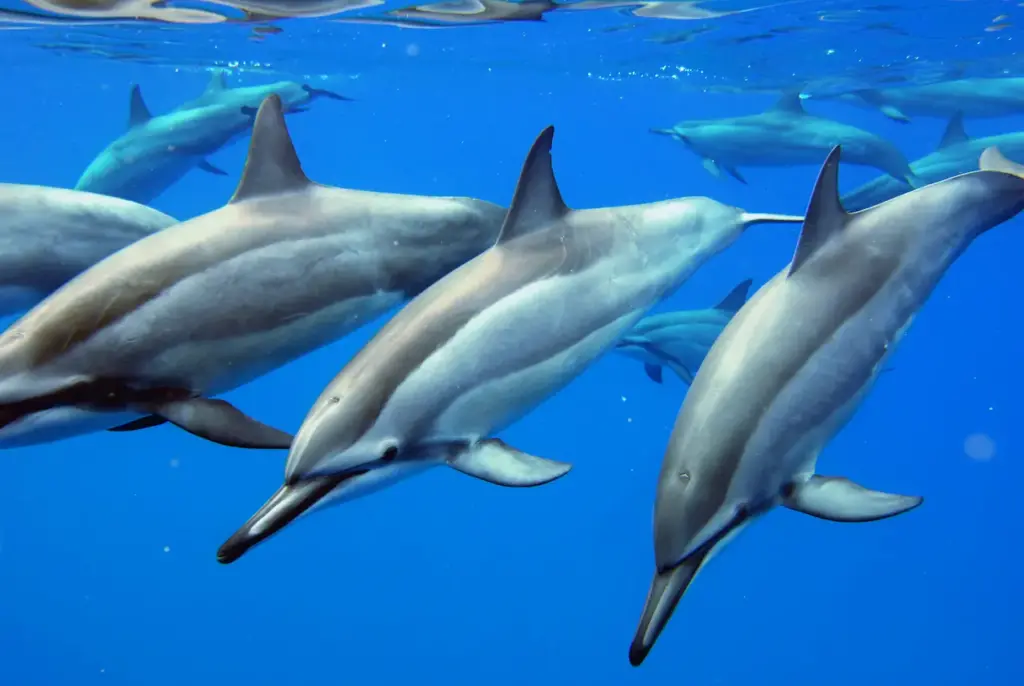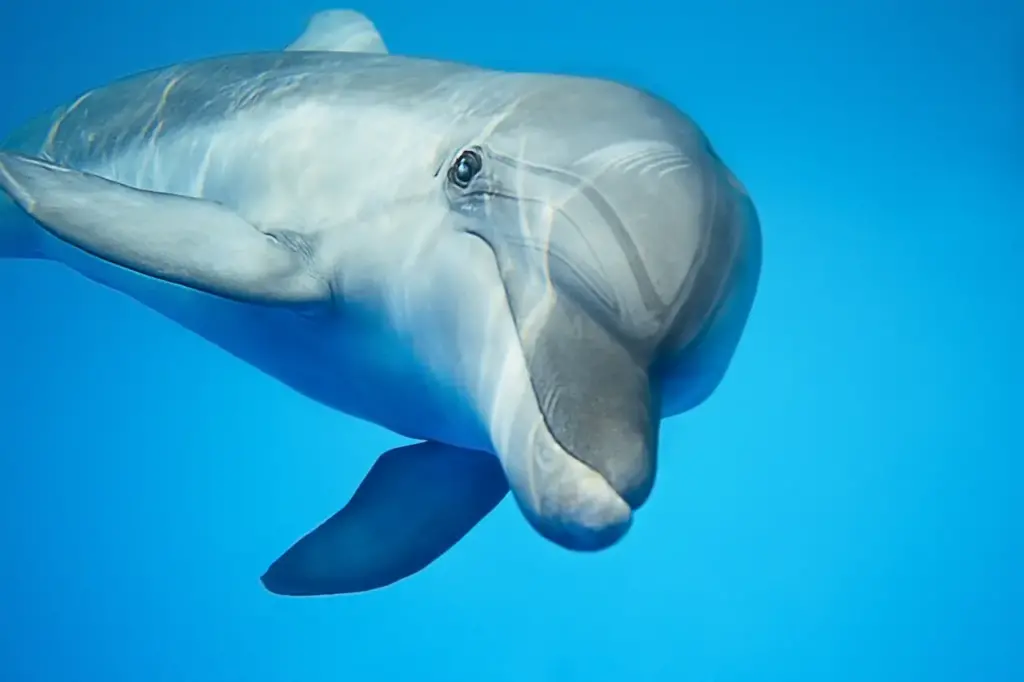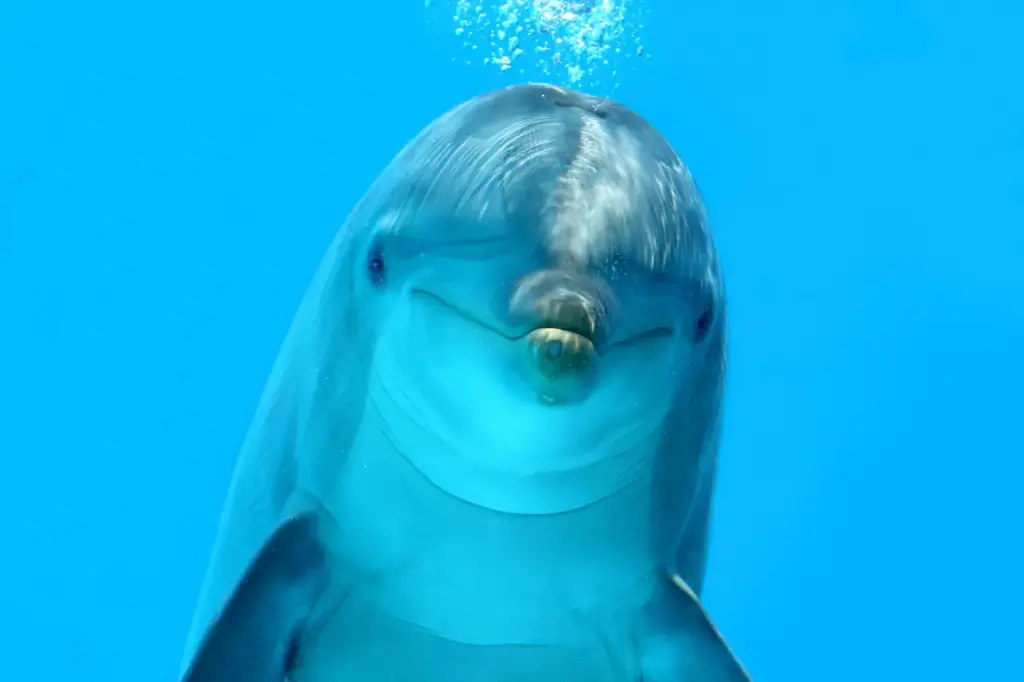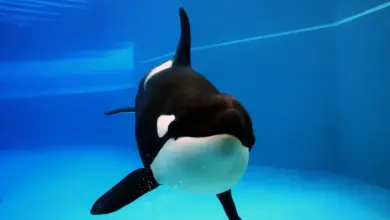What Eats Dolphins? What Do Dolphin Eat?
Dolphins captivate people worldwide. Their athleticism, intelligence, and friendly nature draw admiration. But despite their appeal and abilities, dolphins still face mortal threats in the oceans from predators adapted to hunt them. This article explores what eats dolphins in marine habitats and how these species kill and consume dolphin prey.
Dolphins possess special traits that aid their survival. They have streamlined, muscular bodies enabling speeds over 18 mph to chase down swift prey. Their intelligence allows complex communication, cooperation, and hunting strategies in social groups. Dolphins rely on safety in numbers in pods and larger herds. Their speed, smarts, and solidarity provide defense against ocean dangers.

Built for Speed and Smarts
To appreciate what eats dolphins, one must understand their evolutionary adaptations. Dolphins belong to the family Delphinidae, which includes orcas, pilot whales, and similar-toothed whales. Over millions of years, dolphins evolved specialized traits to thrive in marine environments.
Dolphins possess hydrodynamic bodies, enabling fast swimming to catch nimble prey like fish and squid. Internal blubber provides insulation in deeper, colder waters. Powerful tails supply locomotion through vertical strokes while pectoral fins steer precise movements.
Dolphins also have large, highly developed brains compared to their body size. This gives advanced cognition for memory, communication, and social cooperation. Dolphins produce sophisticated vocalizations, echolocation, touch, and posturing to share information and intentions. In pods and schools, dolphins coordinate actions and watch for threats.
Their intelligence translates into communal hunting and defense. Safety in numbers increases vigilance and decreases individual risk. With speed, smarts, and solidarity, dolphins can evade many ocean dangers. But some deadly hunters still threaten dolphins across habitats.
Shark Attacks
One frequent dolphin predator worldwide is the mighty shark. As apex hunters, sharks will prey on dolphins when possible, thanks to their size, strength, and serrated teeth. Certain species are specially equipped to kill dolphins. Bull sharks stand out for regularly attacking and eating dolphins.
Thriving in warm, shallow coastal waters shared by dolphins, bull sharks exceed 11 feet long and 500 pounds. Their extremely powerful jaws apply incredible biting force. Rows of serrated teeth can shred prey. Bull sharks’ brute strength enables them to overpower dolphins.
Tiger sharks are another regular dolphin predator. They roam tropical and subtropical waters as solitary hunters, reaching 18 feet long in some cases. With mouths adapted for slicing through bone and flesh, they eat practically any prey encountered, including dolphins.
Great white sharks combine speed, size, and stealth to surprise dolphin prey. Up to 20 feet long, they can inflict massive injuries on large animals. While not frequent predators, great whites kill and consume dolphins, especially calves.
Orcas Coordinate the Kill

While sharks rely more on individual power, killer whales coordinate pack hunting strategies to take down dolphins. Of all ocean predators, orcas demonstrate the most tactical adaptations for preying on dolphins through cooperation. Different orca populations worldwide have customized, coordinated tactics to hunt dolphins. Some groups isolate a single dolphin from its pod to drown it.
Others herd dolphins into tight balls to separate weakened individuals. In New Zealand, certain orca pods even create waves washing dolphins ashore, where they become stranded prey. Killer whales further leverage their intelligence through group communication, dividing roles, and sharing the spoils. Their sophisticated teamwork counters even vigilant and elusive dolphin pods.
Crocs Lie in Wait
In coastal rivers and mangroves, massive crocodilians become opportunistic ambush predators capable of snatching dolphins. While not pursuing dolphins through sustained attacks, crocodilians use burst strength and stealth to seize any chance for an easy meal.
The American crocodile is an apex predator found in Central and South America, exceeding 16 feet long in many cases. With lightning reflexes, vice-like jaws, and tremendous biting force, even adult dolphins make tempting targets. When dolphins stray into strike range, crocs launch from the water to attack before dragging prey into a death roll.
Alligators and caimans present similar dangers in brackish waters where dolphins enter their hunting grounds. Though not frequent dolphin predators, their prehistoric capabilities make any isolated dolphin potential prey. Whether in murky rivers or busy estuaries, crocodilians remain an ever-present threat.
Humans Pose the Greatest Threat
While sharks, orcas, and crocodiles all prey on dolphins, humans pose the most widespread threat through fishing practices and organized hunts. With advanced technologies, humanity has industrialized harvesting marine life, often with devastating unintended consequences.
Fishing methods like purse seining and gillnetting entangle and drown untold dolphins through accidental bycatch. In places like Japan, the Faroe Islands, and Peru, dolphins are also deliberately hunted for meat and used as bait. These government-sanctioned community hunts involve herding pods into coves and then slaughtering them en masse in near-shore waters.
While regulations limit the scale of dolphin kills, direct hunting persists in various regions based on tradition despite vocal opposition. With expanding maritime industry and commerce, humanity continues to disrupt ocean habitats relied on by dolphins and other wildlife. Whether through organized hunts or incidental bycatch, humans likely represent the most prolific and menacing predator from a dolphin’s perspective.
Seals and Sea Lions
Seals and sea lions are semi-aquatic marine mammals called pinnipeds. Though not frequent predators, large seals occasionally attack and eat dolphins.
The leopard seal is found in Antarctica and parts of the Southern Ocean. Reaching up to 13 feet (4 m) long, leopard seals are fierce predators with long fangs adapted for feeding on fish, penguins, and other seals. They will sometimes kill and eat dolphins that venture into their frigid habitats.
Sea lions are also opportunistic dolphin predators. Steller sea lions are huge pinnipeds weighing over 2,200 pounds (1,000 kg). Their size allows them to prey on large fish, seabirds, and even young dolphins on occasion. Other sea lion species may eat dolphins, but reports are rare. Overall, seals and sea lions do not actively hunt dolphins. But if encountered, the biggest pinniped species can overpower even adult dolphins as incidental prey.

Large Fish
A few species of massive predatory fish have been known to consume dolphins. These huge marine fish are rare but can pose a danger to dolphins that swim in their vicinity. The Goliath grouper is the biggest bony fish in the ocean, reaching 800 pounds (360 kg) and nearly 9 feet (2.7 m) long. They use their giant mouths to suck in prey and have been recorded eating small dolphins on occasion.
Wels catfish inhabit European rivers and lakes, reaching up to 13 feet (4 m) long. Like the Goliath grouper, these giant fish can swallow small dolphins that stray into their freshwater habitats. While not frequent predators, a few supersized fish species can eat dolphins if given the opportunity. Their huge mouth and body size overcome even adult dolphins.
Conclusion
While highly intelligent and social animals, dolphins still fall prey to several larger ocean predators. Sharks and killer whales are well-adapted to hunt dolphins through size, strength, speed, and group strategies. Crocodilians and humans also opportunistically prey on dolphins they encounter.
However, overall, predation impacts small percentages of most dolphin populations. Their agility, pod coordination, and intelligence allow dolphins to largely avoid natural predation. However, human activities like overfishing and hunting have greater long-term consequences for dolphin conservation.
Understanding what eats dolphins provides deeper insight into marine food webs and the co-evolution of predator-prey relationships in ocean ecosystems. It can inform efforts to protect these socially complex and vulnerable marine mammals across the world.

